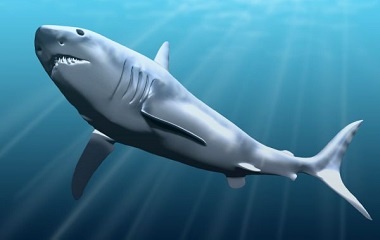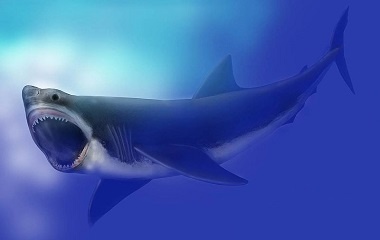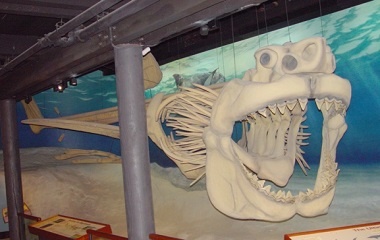What is a Megalodon?
Although it’s been extinct for 2.6 million years, the Megalodon still has a death-grip on our imagination. This gigantic shark was the apex predator of its time, feasting on full-grown whales and giant sea turtles. Good thing it never encountered our human ancestors!
Characteristics
Physical Description
Calling a Megalodon “huge” would be an understatement. With lengths up to 59 feet, this prehistoric monster is three times the size of a great white shark! His jaws alone might have spanned 7 feet, allowing him to easily swallow you whole.
Because most of the Megalodon’s body was made of cartilage, which decomposes quickly in ocean water, it’s difficult for paleontologists to be certain about its body proportions. Some envision the shark as a massive version of the great white shark, while others claim that Megalodon looked more like a sand tiger shark. Yet another camp of paleontologists claims that the beast had its own unique look. Its head was blunter and more pig-like than modern sharks, and its body might have been stockier as well. It’s fins, however, would have been proportionally longer and more graceful than average. The extra length helped the giant steer its bulky body!
Megalodon teeth, which are not made of cartilage, are better preserved. They can be up to 7.5 inches long, with razor sharp serrations along their edges and a distinctive V-shape.
Habitat and Behavior
Not only was it impossible for Megalodon’s neighbors to outrun him or fight him off, hiding from him was out of the question too. He was a global shark, venturing as far south as Australia and as far north as England. He probably preferred warm, coastal waters, but living during the Miocene meant that oceans all over the world were slightly warmer and more shallow than they are today: a perfect set up for the apex predator.
To fill his supersized stomach, Megalodon needed supersized prey. Prehistoric whale bones show the damage that his jaws, which hold the world record for bite force, could do. He also seems to have been more aggressive than modern sharks in his hunting habits; he attacked bony areas like the spine, ribs, and head, rather than tearing out chunks of soft flesh. He might also have ripped the flippers off of sea creatures to immobilize his pray before killing them. Seals, sea lions, giant turtles, sea cows, dolphins, and porpoises could also become a snack for a hungry Megalodon.
But the Mighty Megalodon had a soft side as well. Mother Megalodons travelled long distances to deliver their babies in safe, coastal nurseries. The mother sharks may have nurtured their young in these nurseries, teaching them how to hunt small prey like turtles and seals before they got big enough to face the wild blue yonder.
Cultural Representation
Prehistoric History
The Megalodon’s reign of terror lasted from the beginning of the Miocene, 23 million years ago, to the end of the Pliocene, 2.6 million years ago. Their lives did overlap with our human ancestors, but our ancestors probably never encountered this massive predator.
It’s hard to imagine what could have put an end to a predator as mighty as this giant shark, but paleontologists have a few theories. First, the oceans began cooling and sea levels began dropping during the Pliocene. The warm, coastal areas that the Megalodon used to hunt and raise its young dried up. Second, the giant whales that Megalodons dined on began declining in numbers. Some of them moved into deeper, colder waters, where the Megalodon couldn’t follow them. Others died of starvation. Third, a race of giant, the ancestors of today’s top predators (like great white and killer whales) began to compete with Megalodons for food. Combined, these three pressures managed to push the Megalodon into existence. By the middle of the Pliocene, they were no more than a collection of teeth and vertebrae, scattered across the ocean floor.
Paleontology
Megalodon teeth are not incredibly rare, as far as fossils go. They are scattered all over the world and, in many places, hidden just below the earth’s surface.
In the 1600s, scholars of the Renaissance period began describing Megalodon teeth, which they believed were the petrified tongues of dragons or serpents. Then, in 1667, Nicholas Steno correctly connected the “stone tongues” with shark teeth, which he had been studying recently.
The idea of giant shark teeth caught on, and paleontologists have been captivated by the Megalodon ever since.
Modern Appearances
The Megalodon has captivated imaginations outside of paleontology as well. It has inspired two monster horror movies and is sometimes cited as the real-life inspiration behind Jaws. National Geographic and Discovery Channel have celebrated the monster shark in many documentaries, two of which were hoaxes designed to trick the audience into believing that Megalodon still lives.
Megalodon






No comments:
Post a Comment